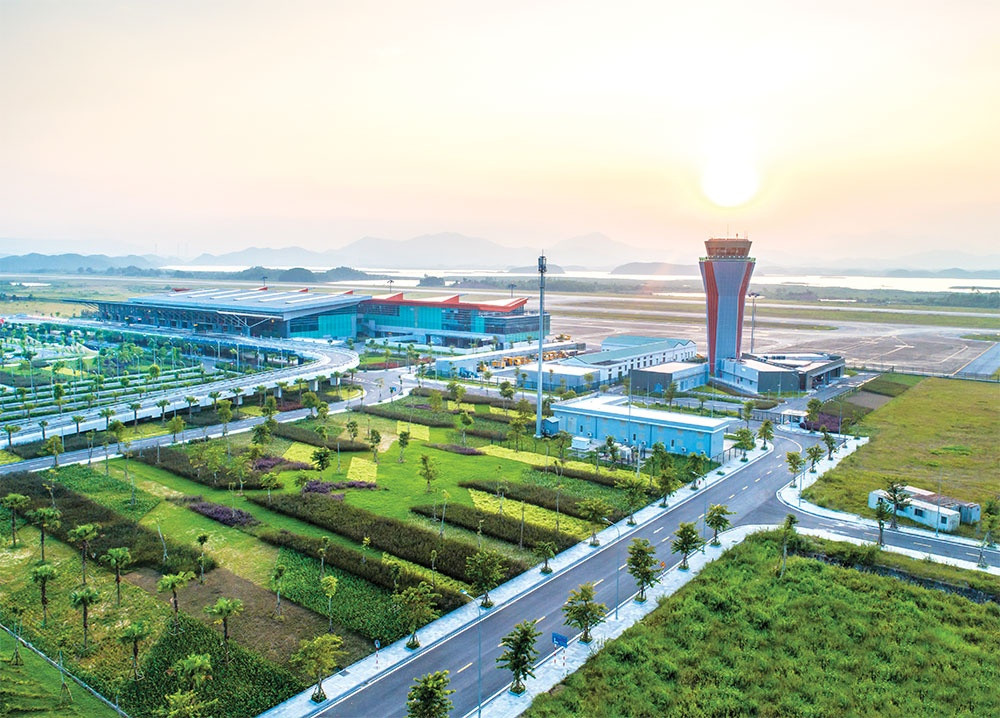Two months ago, Thanh Hoa People’s Committee received a notice from Airports Corporation of Vietnam (ACV) – the unit managing the construction of passenger terminal T2 of Tho Xuan Airport in the central province, with a capacity of five million passengers per year and a total investment of about $88 million – that the project is not part of the medium-term public investment plan for the 2021-2025 period and will be phased out after 2025.
 |
The announcement from ACV means that Thanh Hoa must attract investment in the construction of terminal T2 itself for the 2022-2025 period.
A representative of Thanh Hoa People’s Committee said that Terminal T1, with a designed capacity of 1.2 million passengers per year, was overloaded as the number of passengers passing through the airport continued to increase at an average of 17 per cent annually in the last few years.
Dong Hoi, the first domestic airport in Vietnam in the central province of Quang Tri and built in the 1930s, was rebuilt in 2006.
Investment is a major barrier, limiting Vietnam’s domestic aviation infrastructure system. Data from the Vietnam Logistics Report 2021 from the Ministry of Industry and Trade showed investment in aviation infrastructure has slowed, partly because of the pandemic, but mainly due to a limited investment fund.
By 2021, Vietnam had 22 airports and airfields with a total area of about 12,400 hectares. Most of these airports can accommodate A320/A321, and some airports like Dien Bien, Rach Gia, Con Dao, and Ca Mau can only operate ATR72 or equivalents.
The fact investors do not want to pour capital into aviation infrastructure projects has become a problem for cities and provinces planning to develop airports, including Quang Tri, where the locality has approved a strategy to build an airport covering 265ha, with the total investment of $243 million.
Vo Van Hung, Chairman of Quang Tri People’s Committee, at a meeting with the Ministry of Transport in mid-September, said, “Airport investment requires large capital, but how to mobilise capital in the form of public-private partnerships (PPP) remains unclear.”
While the development of domestic airports is riddled with internal issues, the development of aviation infrastructure to serve economic growth is urgent.
Vietnam needs $15.3 billion to develop 28 airports by 2030. Funds for the implementation of these projects are to be mobilised from sources such as official development assistance, the state budget, commercial loans, and private capital in the form of PPP projects.
Thus, there are countless opportunities for localities wishing to expand and build airports, as well as investors in aviation.
According to the Vietnam Logistics Report 2021, the current airport network is planned based on a model that utilises the airports of Hanoi, Danang, and Ho Chi Minh City, and cargo traffic to connect with domestic and international routes.
However, the current air traffic volume comes mainly through ports in Noi Bai, Danang, Cam Ranh, and Tan Son Nhat – all currently exceeding their designed capacity.
Many researchers recognise the fact that the state budget is not enough for investment in infrastructure development, especially in building more aviation infrastructure.
Vietnam only currently has the Law on Public-Private Partnership Investment, two decrees guiding the implementation of the law, and a number of circulars.
This is not enough to adjust arising issues in PPP practice. Experts believe that this law, if not amended and supplemented, will not meet the needs for attracting private capital in aviation.
Tran Chung, chairman of the Vietnam Association of Road Traffic Investors, said, “The failure to correctly define the rights and obligations of business entities in investment projects in the PPP format leads to many inadequacies.”
Chung hopes the regulations on the rights and obligations of state and private investors will be supplemented in the law to ensure the legitimate rights and interests of both parties.
Source: VIR